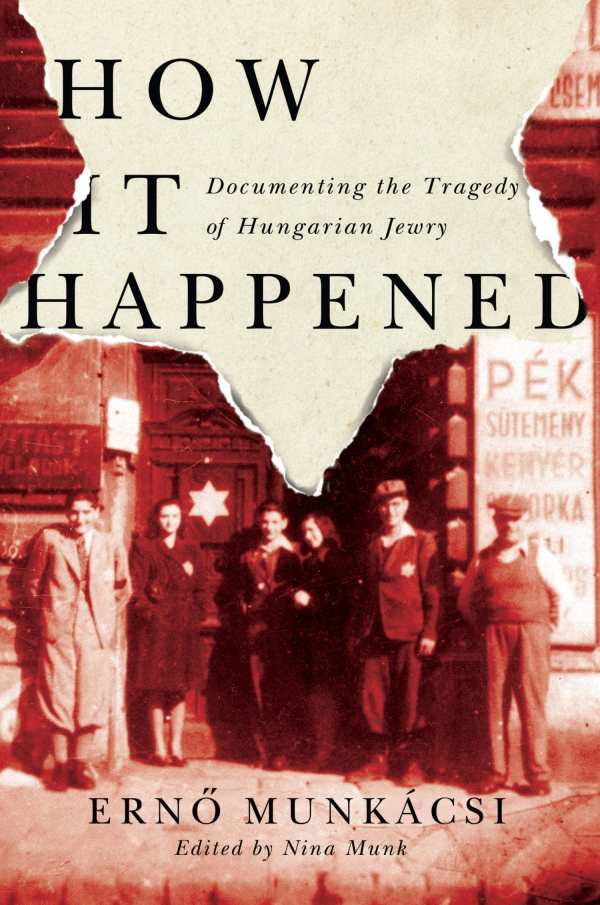How It Happened
Documenting the Tragedy of Hungarian Jewry
Budapest lawyer Ernő Munkácsi was the secretary of Hungary’s Central Jewish Council, which administered restrictions on Jews by the government and its German occupiers during 1944. He documents the decimation of the largest intact European Jewish population in How It Happened. Written in 1950, “when the wounds were still raw,” the book has just been translated into English.
The narrative is preceded by illuminating essays explaining key details about Hungarian history, relations between Jewish and Christian communities, and the background of the many players involved in the crescendo year of deportations to Auschwitz, where 427,000 Hungarian Jews were killed.
Munkácsi writes dispassionately at first, describing life as a proud “Magyar of the Israelite faith” before the aftermath of World War I ushered in a cascade of repressive anti-Jewish laws. His tone shifts when describing his untenable council assignments. It is at times apologetic, regretful, and introspective. This is an increasingly anguished memoir by someone whose faith in law and humanity was broken as the details from the Auschwitz Protocols (testimony from camp escapees) became known. Snippets from desperate letters to government and Christian contacts are interspersed, but the author is unable to do more than delay the inevitable genocide.
Editor Nina Munk, a relative of Munkácsi, provides family background, supplemented by a lengthier portrait of his rise and fall by Susan M. Papp. Historian Ferenc Laczó adds a nuanced, often critical, overview of Holocaust scholarship; religious, ideological, and economic factions among Hungarian Jews; and analysis of what Munkácsi and other council members—not to mention the Hungarian government, police force, and populace—could have done differently to stop the atrocities. Laczó and archivist László Csősz wrote extensive footnotes for Munkácsi’s text and Nina Munk and the Hungarian Jewish Museum provided most of the book’s haunting photographs.
The book is profoundly sad but important reading. We all know how the war ends and how many lives were lost, but this eyewitness account is a good primary source document for understanding how ethnic hatred overtook one of Europe’s most seemingly cultured societies.
Reviewed by
Rachel Jagareski
Disclosure: This article is not an endorsement, but a review. The publisher of this book provided free copies of the book to have their book reviewed by a professional reviewer. No fee was paid by the publisher for this review. Foreword Reviews only recommends books that we love. Foreword Magazine, Inc. is disclosing this in accordance with the Federal Trade Commission’s 16 CFR, Part 255.

